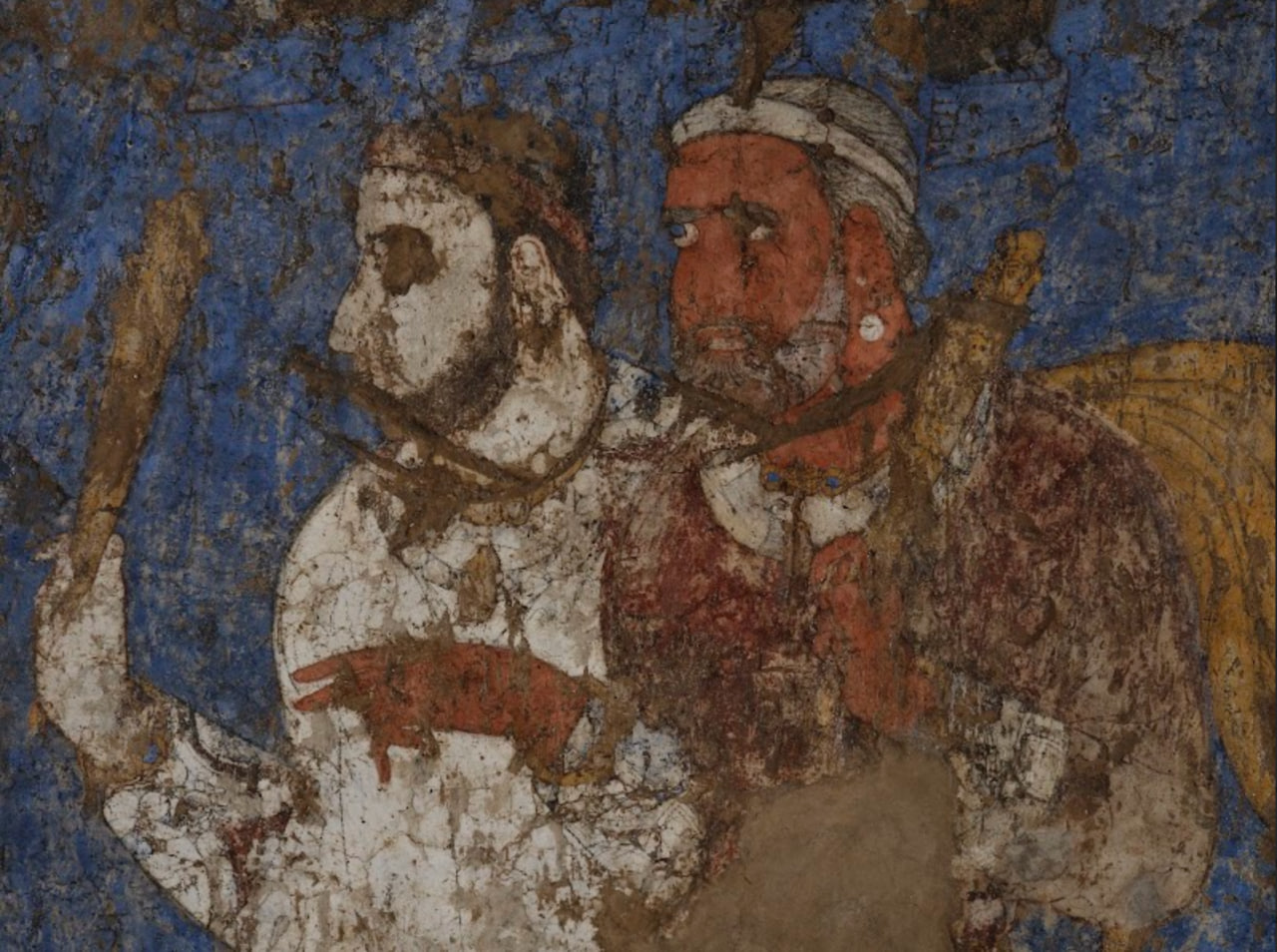LONDON, 10 June: Camel caravans crossing desert dunes, merchants trading silks and spices at bazaars – these are the images that come to mind when we think of the Silk Roads. But the reality goes far beyond this.
A ground-breaking new exhibition at the British Museum, Silk Roads, will challenge and expand the modern popular concept of the ‘Silk Road’ as a simple history of trade between ‘East’ and ‘West’.
In fact, rather than a single trade route, the Silk Roads were made up of overlapping networks linking communities across Asia, Africa and Europe, from Japan to Britain, Scandinavia to Madagascar.
Ambitious in its scope and vast in its geographical coverage, this major new show will be the first to look at how the epic journeys of people, objects and ideas along the Silk Roads shaped cultures and histories. The Silk Roads were in use for millennia, and the forthcoming exhibition will focus on a defining period in their history, from about AD 500–1000. These centuries saw significant leaps in connectivity and the rise of universal religions that linked communities across continents.
Structured into five geographical zones that take visitors on their own Silk Roads journey, the exhibition showcases more than 300 objects – including generous loans by 29 lenders from national and international institutions. From Indian garnets found in Suffolk to Iranian glass unearthed in Japan, they reveal the astonishing reach of these networks.
Many of the items will be on display in the UK for the very first time, including the oldest group of chess pieces ever found and a monumental six-metre-long wall painting from the ‘Hall of the Ambassadors’ in Afrasiab (Samarkand), Uzbekistan. The painting evokes the cosmopolitanism of the Sogdians from Central Asia who were great traders during this period.
Other items on loan come via new partnerships with Uzbekistan’s Art and Culture Development Foundation (ACDF) and museums from Tajikistan, demonstrating the importance of Central Asia in this continent-spanning tale.
Silk Roads will also be the first exhibition in the Museum’s history to have a multi-curatorial approach, featuring objects from across the institution.
Visitors will also meet figures whose stories are entwined with the Silk Roads, including Willibald, an ingenious balsam smuggler from England, and a legendary Chinese princess who shared the secrets of silk farming with her new kingdom. Covering deserts, mountains, rivers and seas, the Silk Roads tell a story of connection between cultures and continents, centuries before the development of the globalised world we know today.
Luk Yu-Ping, Basil Gray Curator of Chinese Paintings, Prints and Central Asian Collections adds: “Our aim in this exhibition is to tell a richer, more complex story of the Silk Roads beyond trade between East and West, highlighting the interconnectedness of Asia, Africa and Europe during the period from AD 500 to 1000. We are very excited about the incredible, first-time loans that will be featured alongside key British Museum objects. This has been a truly collaborative effort, very much in the spirit of the Silk Roads.”
Sue Brunning, Curator of European Early Medieval & Sutton Hoo Collections, said:
“It's tremendously exciting to expand the Silk Roads story into parts of the world that are not traditionally associated with its popular image – including here in Britain. For instance, visitors will encounter a whalebone box made in the northeast of England, but carved with stories, histories and languages drawn from the wider world. It’s an astonishing piece that really encapsulates the transcontinental breadth of connectivity between AD 500 and 1000. “
Elisabeth R. O’Connell, Byzantine World Curator, comments: “This Silk Roads story comprises many journeys that span the distance from the Pacific to the Atlantic. From empires to individuals, we’ve aimed to show the range of networks that facilitated movement, both voluntary and involuntary. It is a huge privilege for us to bring the stories of diplomats and pilgrims, scholars and students, refugees and captives, traders and traded to our visitors.”
Nicholas Cullinan, Director of the British Museum, comments: “The British Museum is world-renowned for its gripping, award-winning exhibitions which I’ve always admired. Silk Roads will be the first to open since I became Director, and I was particularly impressed by the way that it challenges existing perspectives while also involving deep collaboration – with departments across the Museum working together to bring it to its ambitious, compelling fruition.”
The Huo Family Foundation said: “The Foundation is delighted to continue its partnership with the British Museum with the support of Silk Roads. Aligned with our commitment to fostering education, enriching communities, and advancing the pursuit for knowledge, we are pleased to enable a show that highlights the rich and diverse history of the Silk Road. Through showcasing the depth of the museum's Collections and strength of its curatorial team, we are proud to witness a celebration of cultural exchange and discovery.”
Silk Roads will run from 26 September 2024 – 23 February 2025 in The Sainsbury Exhibitions Gallery at the British Museum.

